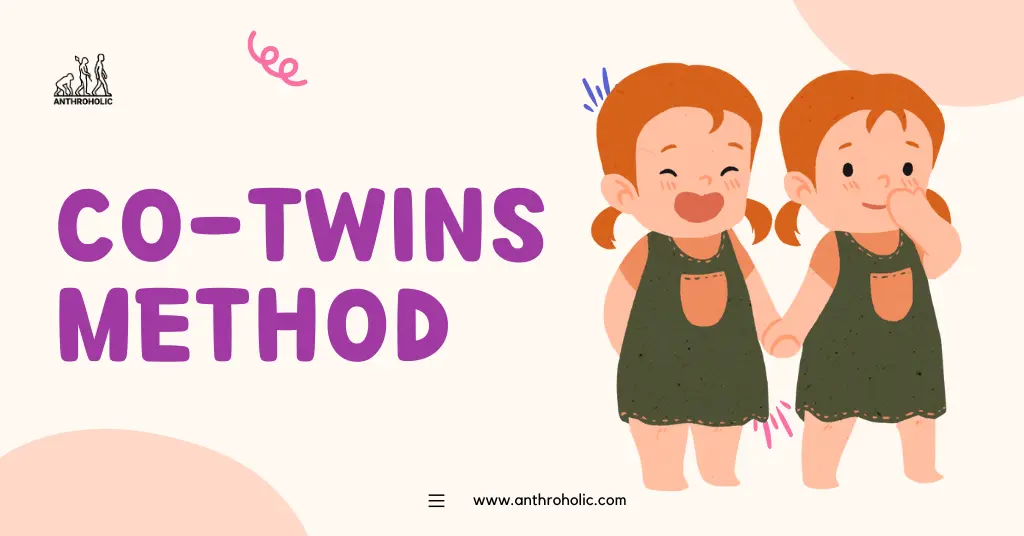AI Answer Evaluation Platform Live Now. Try Free Answer Evaluation Now
Co-Twins
Co-twins, simply referred to as twins, are two offspring produced by the same pregnancy. Twins can be categorized broadly into two types: monozygotic or identical twins, who originate from a single fertilized egg that splits into two, and dizygotic or fraternal twins, who arise from two separate fertilized eggs [1].

Genetic Mechanisms Behind Twinning
Twinning is a complex process influenced by both genetic and environmental factors. For monozygotic or identical twins, the twinning event occurs when a single fertilized egg (zygote) divides into two separate embryos. This usually happens within the first few days post-fertilization, but if the split occurs later, it can result in identical twins sharing the same placenta. The precise mechanisms causing this split are still unknown, and currently, no genetic markers linked to this process have been identified [2].
Dizygotic or fraternal twinning occurs when two separate eggs are fertilized by two separate sperm. This process is influenced more heavily by genetics, as specific genes have been identified that increase the likelihood of hyperovulation, or releasing multiple eggs during a menstrual cycle.
Fraternal versus Identical Twins
Fraternal and identical twins provide unique opportunities to study human development and genetics due to their different degrees of genetic similarity. Identical twins, being genetically identical, are often studied to understand the influence of environmental factors on various traits since any differences between them are assumed to arise from non-genetic factors.
In contrast, fraternal twins share only about half of their genes, similar to non-twin siblings. Hence, greater similarities between fraternal twins compared to regular siblings can indicate a more significant role for shared environmental factors, like family upbringing or prenatal environment, in shaping those traits.
Overview of Different Cultural Beliefs and Practices
Various societies have developed unique beliefs and practices surrounding twins, reflecting their understandings of fertility, kinship, and the supernatural.
- Yoruba People (Nigeria): The Yoruba people of Nigeria have one of the highest rates of twin births in the world. Twins (known as ‘Ibeji’) are considered special beings with spiritual significance. If a twin dies, it is customary for the Yoruba to create a carved wooden figure, or ‘ere ibeji’, which is treated as the deceased twin and cared for by the family. This practice reflects the belief in the enduring spiritual presence of the twin.
- Native American Tribes: Among the Hopi people, twins are believed to bring balance to the world and are associated with the major deities, Poqanghoya and Palongawhoya. These beliefs are often enacted in ritual and myth, underscoring the cultural importance of twins in these societies
The Nature vs. Nurture Debate in Co-Twins
- Influence of Genetics: The ‘Nature‘ side of the Nature vs. Nurture debate pertains to the biological and genetic factors that contribute to human behavior and physical traits. Twin studies, especially those involving monozygotic (identical) twins, provide unique opportunities to understand the role of genetics. As identical twins share nearly 100% of their genetic material, differences between them in traits or behaviors can be attributed to non-genetic influences, indicating the extent of genetic contribution [3]. Furthermore, by comparing the concordance rates (similarity in traits) between identical and fraternal twins, researchers can infer the heritability of certain traits or diseases.
- Role of Environment: On the ‘Nurture‘ side of the debate, twin studies also offer critical insights. This includes the study of shared environmental influences (such as family socioeconomic status or parental education) and non-shared environmental influences (like individual experiences or illnesses). For instance, when identical twins are reared apart and still exhibit similar traits, this provides evidence of the strong influence of genetics. However, if identical twins reared together show differences, this indicates the impact of the non-shared environment [4].
Contribution of Twin Studies to Behavioral Sciences
Twin studies have contributed significantly to behavioral sciences, helping untangle the complexities of nature and nurture. By comparing the behaviors of identical and fraternal twins, researchers can isolate genetic and environmental effects, contributing to fields ranging from psychology to behavioral genetics.
Future Directions for Co-Twin Research
Twin research has been a mainstay of human behavioral genetics for many decades. However, the rapidly evolving landscape of genomics, new computational tools, and other technological advancements signal exciting future directions for co-twin research. Future twin studies may increasingly incorporate genomics and epigenomics. While traditional twin studies have proven invaluable in demonstrating the heritability of traits, they provide less insight into the specific genes involved. With advancements in whole-genome sequencing and other genomics technologies, future research can delve deeper into the genetic basis of traits. There is also a growing emphasis on longitudinal twin studies, which follow twins over time to observe changes and developments. These studies can provide more detailed insights into how genetics and environment interact across the lifespan. In conclusion, the future of co-twin research is promising, with a range of new tools and methodologies that can enhance our understanding of the complex interplay of genetics, environment, and behavior.
References
[1] Moilanen, J., Jern, P., Knafo-Noam, A., Nikolov, M., & Mõttus, R. (2020). Beyond the comparison of means: Quantifying the effects of nonshared environment on phenotypic variability at the twin and family level. Behavior genetics, 50(4), 233-249. https://pubmed.ncbi.nlm.nih.gov/8222877/
[2] Hoekstra, C., Willemsen, G., van Beijsterveldt, T. C., Montgomery, G. W., & Boomsma, D. I. (2018). Heritability of monozygotic twinning. Fertility and sterility, 109(2), 289-295.
[3] Bouchard, T. J. (1998). Genetic and environmental influences on adult intelligence and special mental abilities. Human biology, 281-296.
[4] Polderman, T. J., Benyamin, B., de Leeuw, C. A., Sullivan, P. F., van Bochoven, A., Visscher, P. M., & Posthuma, D. (2015). Meta-analysis of the heritability of human traits based on fifty years of twin studies. Nature Genetics, 47(7), 702-709.




